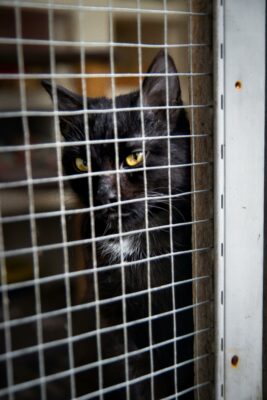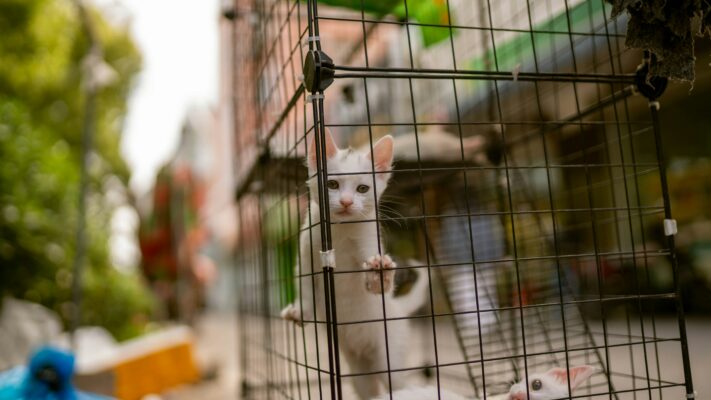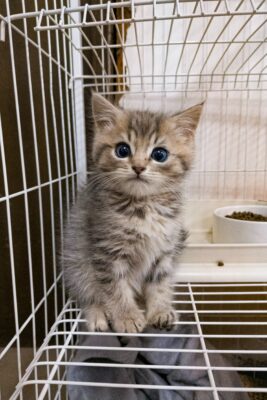Australia, with its diverse wildlife and ecosystems, faces unique challenges when it comes to managing feral cat populations. Feral cats, introduced to the continent by European settlers, have become a significant threat to native wildlife, contributing to the decline of several species. To address this issue, cat traps have become a commonly used tool for cat management in Australia.



Why Cat Traps are Commonly Used in Australia:
Cat traps are extensively used in Australia due to the need for effective feral cat control. These specialized cat traps play a crucial role in capturing and managing the growing feline population, helping to mitigate the environmental impact on native fauna. Feral cats are known for their hunting prowess, posing a serious threat to endangered and vulnerable species across the country.
Advantages of Cat Traps:
- Precision Targeting: Cat traps allow for targeted and specific capture or trapping of animals, ensuring that only feral cats are trapped, minimizing the risk to domestic cats or non-targeted wildlife.
- Humane Capture: Modern cat traps are designed to capture feral cats humanely without causing animal cruelty. They are equipped with features such as padded interiors and trigger mechanisms that prioritize the safety and welfare of the captured native animals.
- Population Control: Cat traps play a vital role in controlling feral cat populations, helping to protect Australia’s unique biodiversity. By managing these populations, the traps contribute to the conservation of native wildlife.



What Are The Different Kinds of Cat Traps?
There are several types of cat traps designed for different purposes, ranging from managing feral cat populations to capturing stray or lost domestic cats. Here are some common types of cat traps:
- Live Cage Traps:
- Description: Live cage traps are perhaps the most commonly used cat traps. They consist of a wire or metal cage with a spring-loaded door that closes when the cat enters the trap.
- How They Work: These traps are typically baited with food to attract the cat. Once the cat steps on a trigger plate inside the trap, the door closes, securely capturing the feline.
- Drop Traps:
- Description: Drop traps are designed to capture cats quickly and efficiently. They consist of a frame with a mesh or netting that can be dropped over the cat when triggered.
- How They Work: Usually operated manually, drop traps are triggered by a remote control or a release mechanism. Once the cat is underneath, the trap is dropped, capturing the cat without physically harming it.
- Havahart Traps:
- Description: Havahart traps are a type of live cage trap known for their humane design. They are available in various sizes and are suitable for capturing feral cats without causing harm.
- How They Work: These traps typically have a gravity-action door that closes when the cat steps on a trigger plate. Havahart traps are known for their reliability and durability.
- Homemade Traps:
- Description: Some individuals create their own DIY cat traps using materials like plywood, wire mesh, or netting. These homemade traps can be customized based on specific needs.
- How They Work: Homemade traps may use a variety of triggering mechanisms, often involving a baited area connected to a door or mechanism that closes when the cat enters.
- Electronic Traps:
- Description: Electronic traps are equipped with sensors and often use technology to monitor and trigger the capture of a cat remotely.
- How They Work: These traps may have motion sensors or remote-controlled mechanisms. Once the cat is detected, the trap is activated, capturing the cat safely and efficiently.
- Conibear Traps:
- Description: Conibear traps are typically used for larger animals but can be adapted for feral cat control. They are spring-loaded traps that clamp down on the cat’s neck.
- How They Work: Conibear traps are set in a way that when the cat enters the trap and triggers the spring mechanism, the trap closes rapidly, capturing the cat.
It’s important to note that regardless of the type of trap used, ethical and humane trapping practices should be followed to ensure the safety and well-being of the captured cats. Always check local regulations and guidelines when using traps for cat management.



Famous Brands of Cat Traps:
Several reputable brands manufacture cat traps, offering a range of options tailored to the specific needs of cat management in Australia. Some of the well-known brands include:
- Havahart: Renowned for their humane traps, Havahart offers a variety of models suitable for feral cat capture.
- Tomahawk Live Trap: With a focus on safe and efficient trapping, Tomahawk Live Trap provides durable and reliable cat traps.
- Duke Traps: Known for their quality and durability, Duke Traps manufactures traps that are widely used for feral cat control in Australia.
FAQs About Cat Traps



Cat traps have become an essential tool in the management of feral cat populations in Australia. As the country strives to protect its unique wildlife, these traps provide a humane and effective solution to control the impact of feral cats on native ecosystems. With advancements in trap design and technology, cat traps continue to play a pivotal role in the conservation efforts of Australia’s diverse and precious environment.





